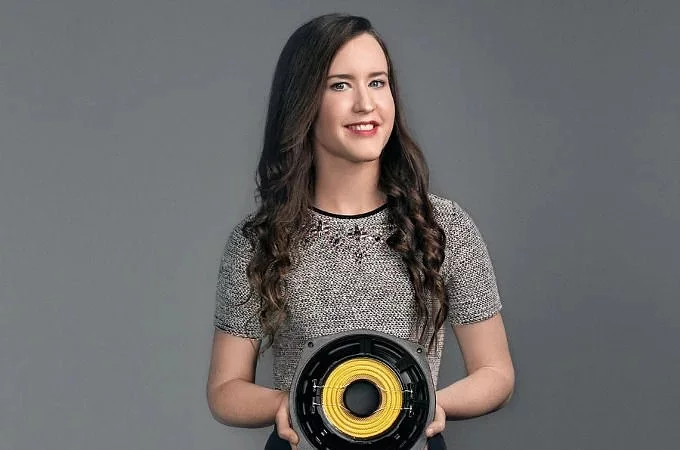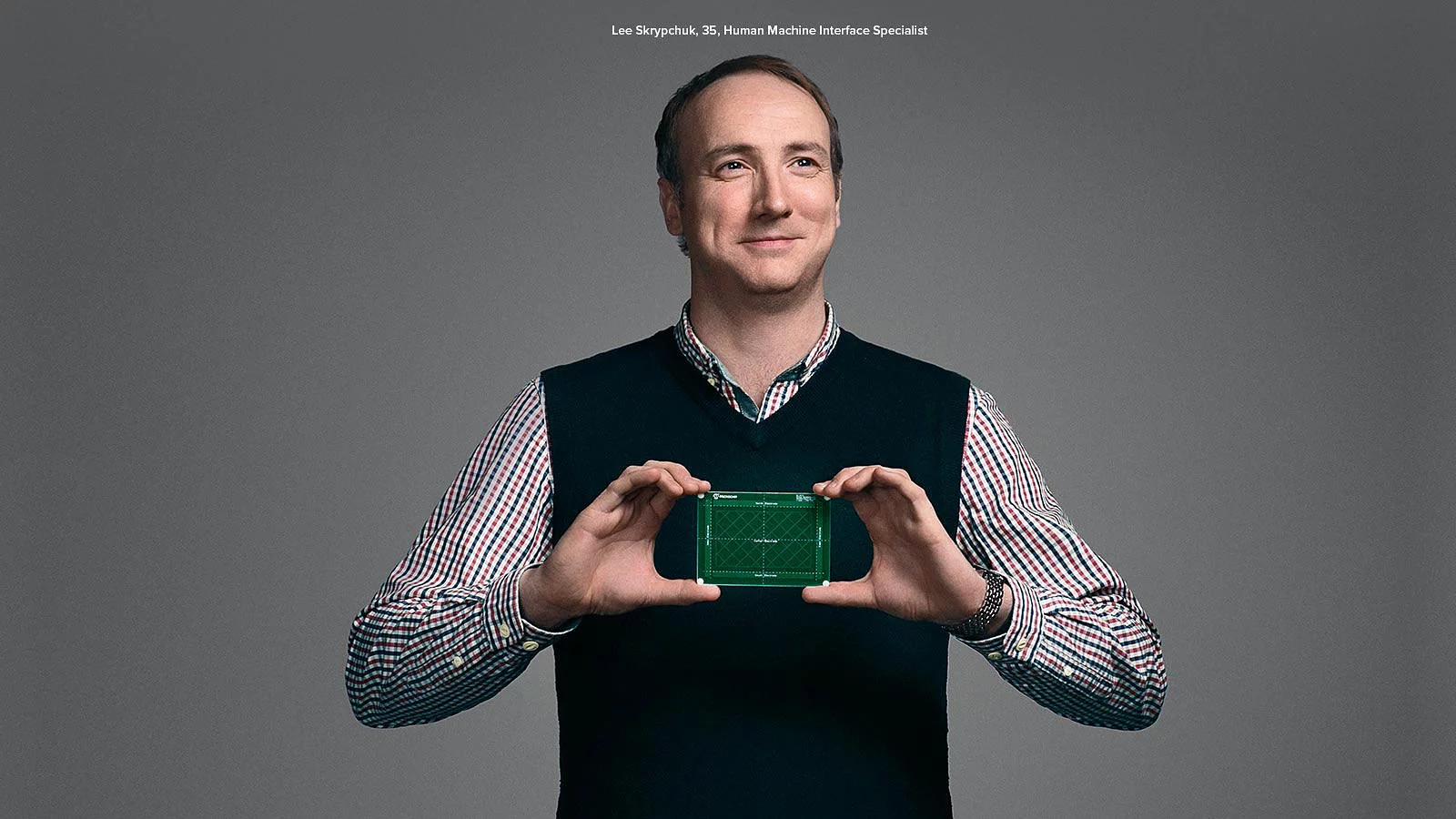ЗНАКОМСТВО С ЭКСПЕРТАМИ JAGUAR

Орла Мерфи, 25 лет
Основная работа: Инженер по калибровке аудиосистем
Образование: Инженер электротехники
В свободное время: Играет на альте в филармоническом оркестре Бирмингема и входит в команду по камоги (спорт, похожий на ирландский хоккей на траве)
Моя работа связана с восприятием звука в салоне автомобиля. В оркестре ты слышишь множество различных звуков, от самых низких частот, издаваемых тубой, до высоких, извлекаемых из флейты-пикколо, поэтому мои уши знают, на чем сконцентрироваться. Недавно я закончила научную работу по пространственному звучанию. Это было действительно интересное исследование. Но зональное распределение звука, когда подавление определенных помех позволяет создавать отдельные зоны, — вот Священный Грааль. Сейчас мы можем балансировать и рассеивать звук в различных частях салона, но в будущем мы хотим создать систему, которая позволит, например, пассажиру на заднем сиденье спокойно разговаривать по телефону, даже если водитель слушает музыку, или пассажиру в передней части салона наслаждаться рок-музыкой в то время, как для пассажиров на заднем сиденье играет классика. Но речь не только о музыке. Нам придется учитывать функции голосового управления, работу датчиков парковки и другие звуки в салоне автомобиля.
Брайан Уотерфилд, 49 лет
Основная работа: Руководитель команды технических специалистов
Образование: по виртуальной реальности и игровым технологиям
В свободное время: «Я перестал играть в регби, потому что приходить на работу с синяком под глазом — плохая идея. Теперь мои хобби — это спортзал и проект TED Talks».
Наша комната виртуальной реальности на момент первого запуска была самой большой в мире. В ней три стены и потолок. А разрешение проецирования в четыре раза выше, чем у формата HD. Обычно мы помещали туда макет интерьера и потом визуализировали остальные детали машины вокруг него. Когда люди в комнате надевали очки, они видели объект в масштабе один к одному. Изначально это делалось для команды, отвечающей за оснащение салона, и грамотного использования пространства. Но со временем специалисты других подразделений JLR изъявили желание использовать эту технологию, и мы создали двух- и трехмерные экраны, подключенные к комнате виртуальной реальности. В комнате одновременно может находиться ограниченное количество людей, но зал, в котором расположены экраны, позволяет 52 зрителям испытать все, что в этой комнате происходит. Реальные испытания автомобиля зависят от множества факторов. Для проверки характеристик при движении по льду или бездорожью нужны соответствующие погодные условия. Но в виртуальном мире нет ограничений. По мере разработки новых технологий моделирования мы сможем контролировать время и пространство, чтобы воспроизводить любые погодные условия.
Ли Скрипчук, 35 лет
Основная работа: Специалист по разработке машинных интерфейсов
Образование: Специалист по электронно-вычислительным машинам и технологиям визуализации, а сейчас защищает диссертацию по системам автомобильных интерфейсов
В свободное время: Воспитывает двоих детей и болеет за футбольный клуб «Ноттингем Форест»
Любопытный факт: Дедушка Ли, по национальности украинец, добавил в фамилию одну гласную, чтобы европейцам было проще ее произносить.

When the iPhone launched in 2007 it changed how we interacted with personal screens. We want something as intuitive and desirable but balanced with controlling a car at the same time. My research group focuses on a lot of speculative stuff that may or may not make it, but there are still 25 of us. In 2007 there were only four. We’re working on what we call ‘off-surface touch’ with a capacitive system that senses your finger from 15-20cm away – so you can wave your hand to open and close the sunroof for example – using the sensor I’m holding. It could be in production in three years. We’re trying to make our systems more sympathetic so people can quickly switch off from one task and get into another by how we design it. We’re trained at some level to drive but no one really trains us to do the other stuff at the same time. For aviation pilots it’s their job, but for many drivers it’s not.
Kris Kobylinski, 30
Day job: Research technology delivery manager, self-learning car project
Education: Masters in Computer Science
Spare time: Spending time with my wife and daughter, playing football, snowboarding, surfing and electric guitar lessons
Inspiration: Nikola Tesla and Albert Einstein ‘for their beautiful minds and amazing inventions’
I lead the development of technologies that don’t exist yet in a team of machine-learning engineers, big-data scientists and human factors specialists. Our aim is to develop the first truly intelligent car that recognises each driver, learns their preferences and offers predictive options. My advice to budding engineers looking to get into this line of work would be to grow a passion for automotive – if you don’t already have one – look for hands-on work experience opportunities and study maths, physics and computer science...hard!

Dr. Thomas Popham, 33
Day Job: technical Specialist, Self-Learning Car Project
Education: mechanical Engineering Degree, Ph D in Computer Science
Spare Time: skiing and Other outdoor pursuits
We’re working on research that uses machine-learning techniques to learn driver preferences. This area is interesting because it is so varied – we need electrical and mechanical engineers, computer scientists, project managers, psychologists and more. Obviously a solid educational background is important, but after that, communication, teamwork and stamina are absolutely essential. Vehicle intelligence is going to be such a big improvement – especially as cars become connected to each other and ‘the cloud’. The car industry is making some great progress in terms of CO2 performance, but I’ll be really excited to see the day when this problem is solved.
Linh Nguyen Slater, 29
Day job: Human Machine Interface specialist for self-learning car project
Education: Bachelor and Master of Science degrees
Spare time: Cooking and eating. ‘My friends call me the Iron Chef or the Vietnamese Martha Stewart’
I’m involved in developing the interfaces for artificial intelligence in the self-learning car. Engineers build the back end while I focus on the front end, the customer-facing design. I conduct user testing to ensure interfaces we design are safe, usable and delightful. I stumbled upon human factors design, also known as ergonomics, HMI or user experience, when I was studying medicine. It’s a field that combines people, engineering and design – just the thing for an artsy scientist who loves people. I cannot wait until the self-learning car is ready in the next six years. It will be the first time that machine-learning techniques will be used in a car and will also serve as a natural transition into autonomous driving.
John Pepperell, 49
Day job: Senior business and product planning manager
Education: Mechanical Engineering degree
Spare time: Running half marathons, motorcycling and bringing up four kids
At school, when everyone else was playing football, the guys I was hanging out with were into fixing old cars like Humber Sceptres, Vauxhall Vivas and Hillman Avengers. The base parts of an engine have been the same for 100 years but what has changed is some of the peripheral technology. A lot of what I do now is about electronic adaption of the engine. It needs to be great in all conditions so we have to adapt the timing and fuelling and for that you need lots of sensors and actuators. In 15 years I think there will still be conventional engines but by then hybrids will be ‘conventional’ technology and we’ll be at the front-end of fuel cell technology perhaps.
Д-Р. ТОМАС ПОФАМ
Технический специалист, проектировщик самообучающихся автомобилей
